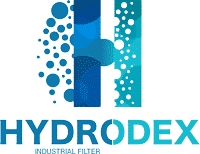Reverse Osmosis RO Membrane Mineral Scaling
Reverse Osmosis RO Membrane Mineral Scaling Causes: All minerals contained in the source seawater are concentrated during the process of membrane salt separation. As their concentration increases during the desalination process, ions of Calcium, Magnesium, Barium, Strontium, Sulfate and Carbonate can form sparingly insoluble salts which could precipitate on the membrane surface. The mineral scales that typically form during seawater desalination are these of Calcium Carbonate CaCO3, Calcium and Magnesium Sulfate (CaSO4 and MgSO4), and Barium and Strontium Sulfate (BaSO4 and SrSO4). Formation of mineral scales on the membrane surface is balanced by the high salinity of the seawater which tends to increase the solubility of all salts. This means that the higher the salinity of the source seawater the less likely a mineral scale forms on the membrane surface at typical seawater pH of 7.6 to 8.3 and desalination system recovery of 40% to 50 %. In brackish seawater desalination systems which typically operate at much higher recoveries (75% to 85%), and ionic strength of the source water is relatively lower, mineral scaling is a frequent problem. In typical seawater desalination systems, Reverse Osmosis RO Membrane Mineral Scaling is usually not a challenge, unless source seawater pH would need to be increased to 8.8 or above to enhance Boron removal.
Calcium Carbonate and Magnesium Hydroxide are the most common causes for Reverse Osmosis RO Membrane membrane scaling, when source seawater pH is increased for enhanced Boron removal. Scale formation in this case can be prevented by addition of antiscalant / dispersant to the source seawater. Commonly used parameters which can be used to predict the seawater’s potential to form mineral scaling of calcium carbonate are the Langelier Saturation Index (LSI) and the Stiff and Davis Index (SDI). These indexes are function of the source seawater pH, Calcium concentration, alkalinity, temperature and TDS concentration/ionic strength. It is important to note that although source seawater temperature usually has limited influence on scale formation, when this temperature exceeds 35°C, Calcium Carbonate scale would form at accelerated rate. Metal oxide and hydroxide foulants most frequently encountered during seawater desalination are iron, manganese, copper, zinc and aluminum.
Typically, open ocean seawater contains very low levels of these metal foulants and therefore, if such fouling is encountered on the membrane elements, the usual sources are overdosing of coagulant (iron salt) or corrosion of pipes, fittings, tanks and other metal equipment located upstream of the SWRO system / desalination plant. Iron and manganese fouling may occur if source seawater is collected via subsurface intake from a coastal aquifer which is under the influence of fresh groundwater that contains high levels of these metals in reduced form (iron of more than 2 mg/L (as ferrous) and manganese of more than 0.5 mg/L). This type of scaling problem has been observed in desalination plants with beach well intakes collecting seawater from alluvial coastal aquifers, which are located near the entrance of a river or a creek into the ocean.
If iron and manganese are in reduced form and they are below 1.0 mg/L and 0.1 mg/L respectively, than they can be removed by the SWRO membranes without causing accelerated fouling. However, if iron and manganese are in oxidized form, their levels should be reduced below 0.05 mg/Land 0.02 mg/L, respectively to prevent mineral fouling. Another mineral fouling compound frequently encountered in fresh surface water and brackish aquifers is silica. Open ocean seawater contains silica of less than 20 mg/L and therefore, this compound in not a typical cause of Seawater Reverser Osmosis RO membrane mineral fouling. Silica content above this level usually indicates that the source seawater quality is influenced by a fresh water discharge or coastal aquifer of high silica content located near the desalination plant intake area.


